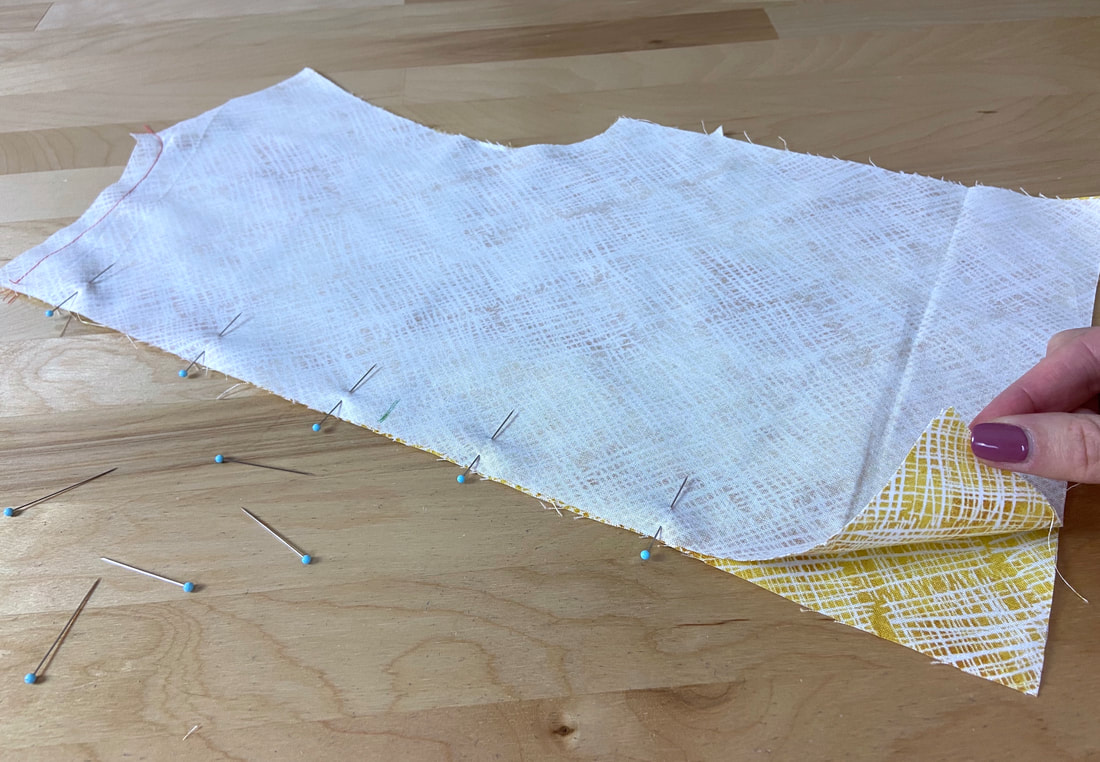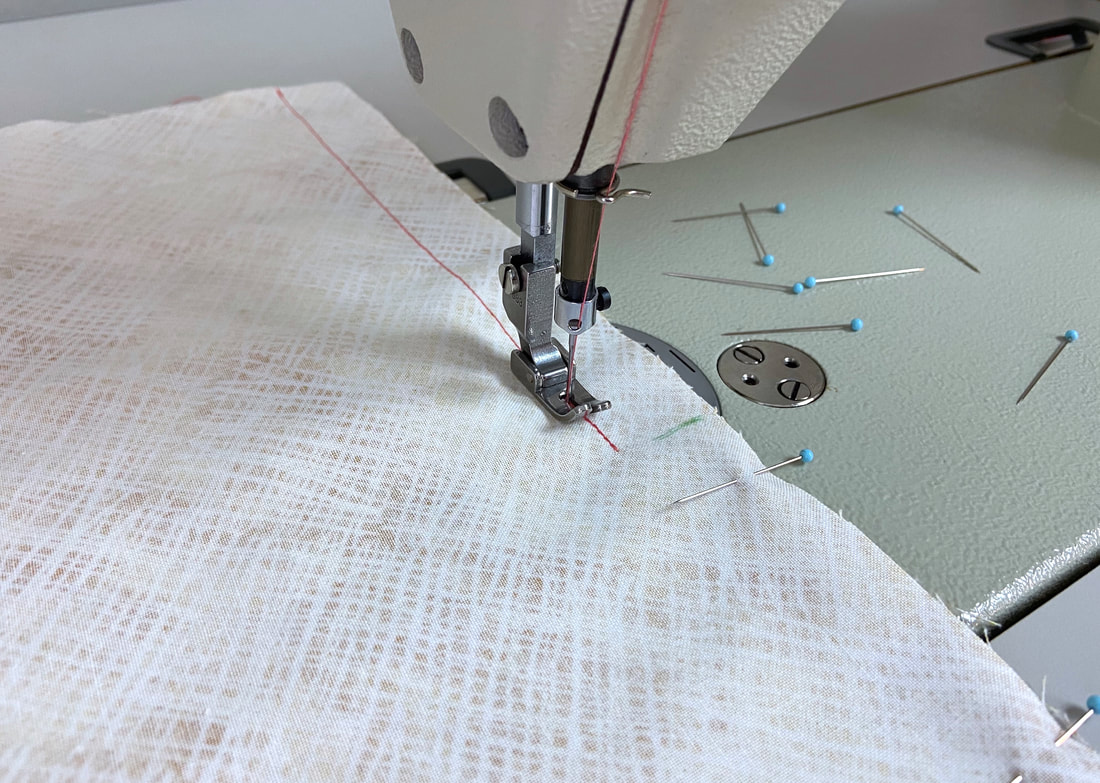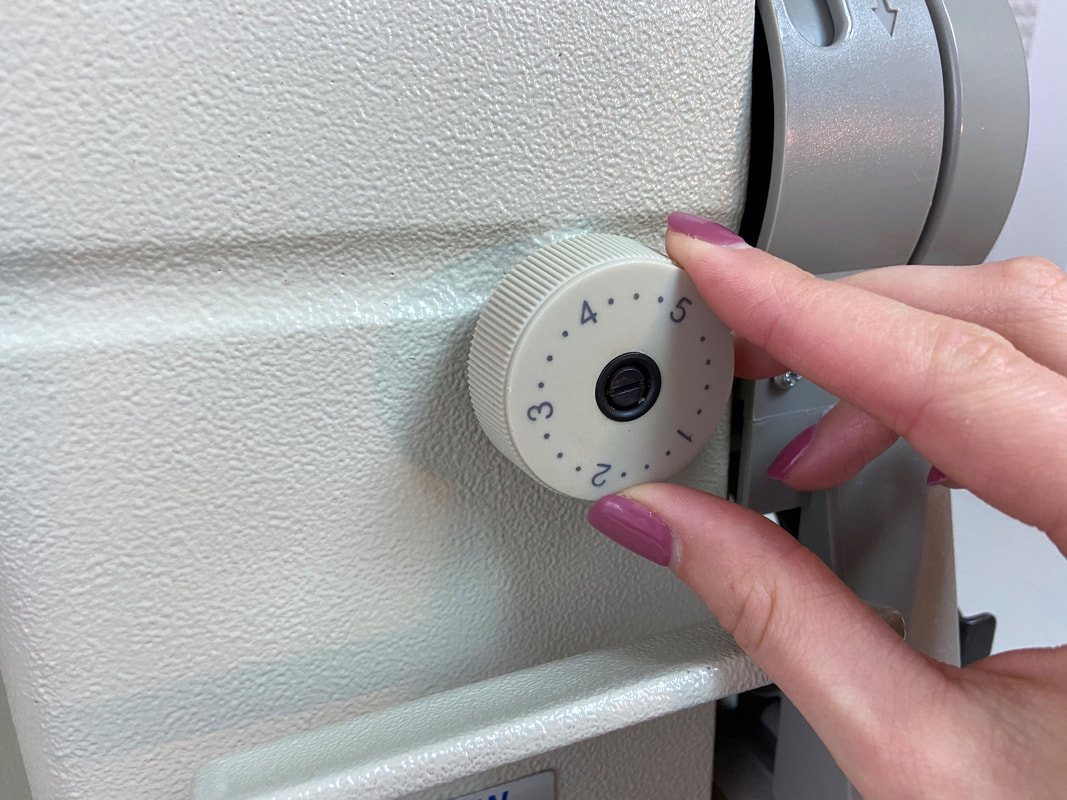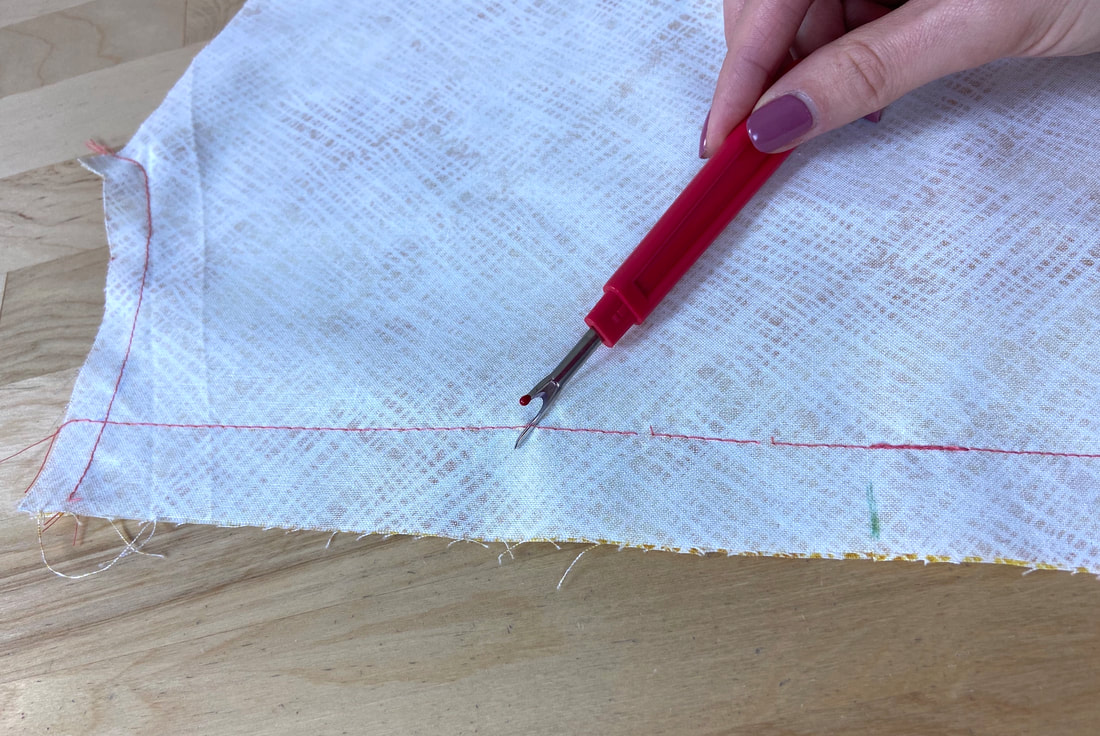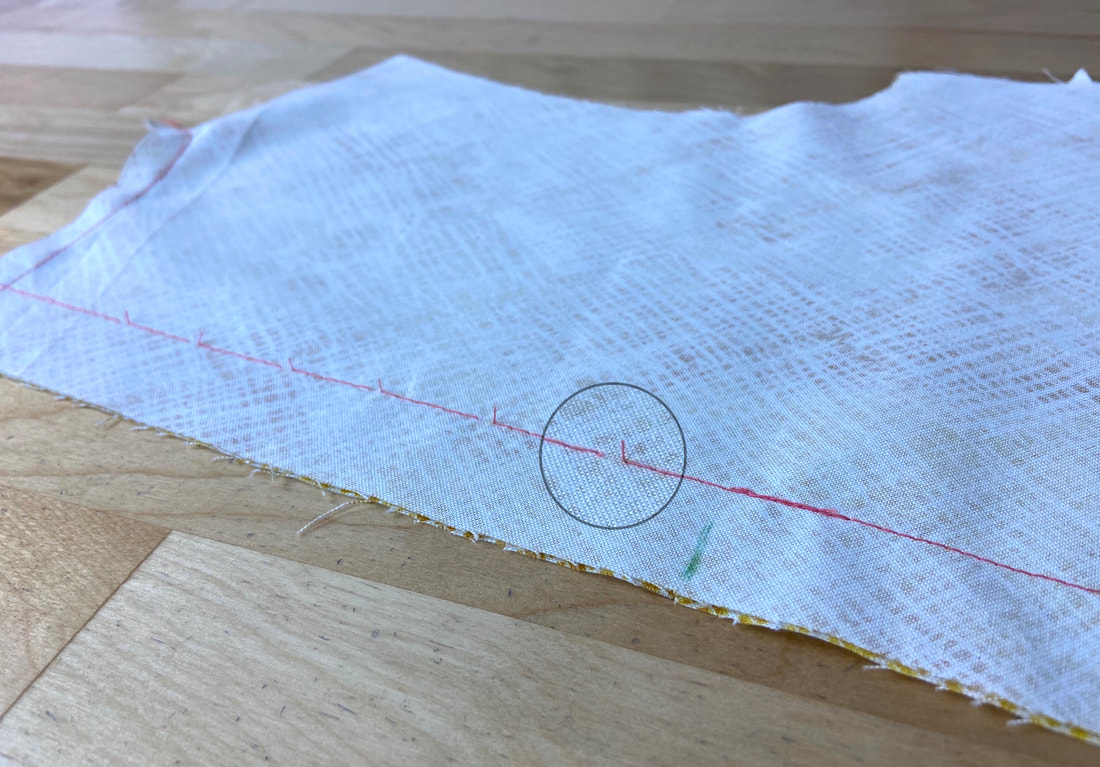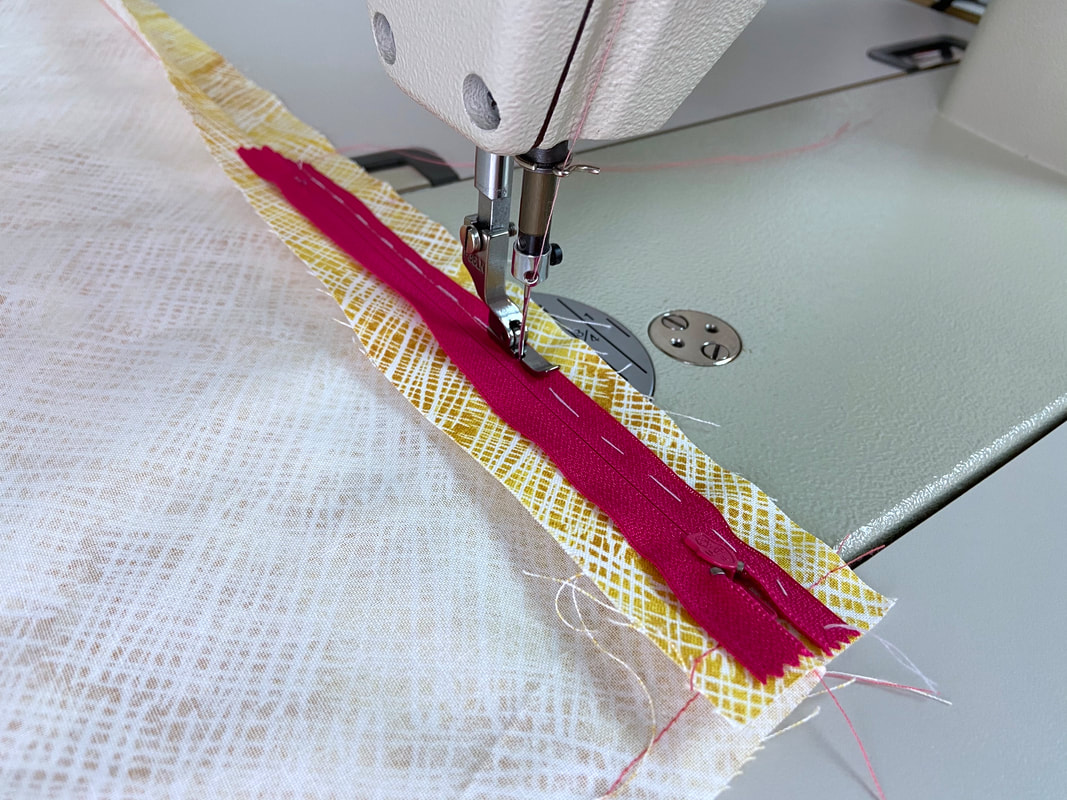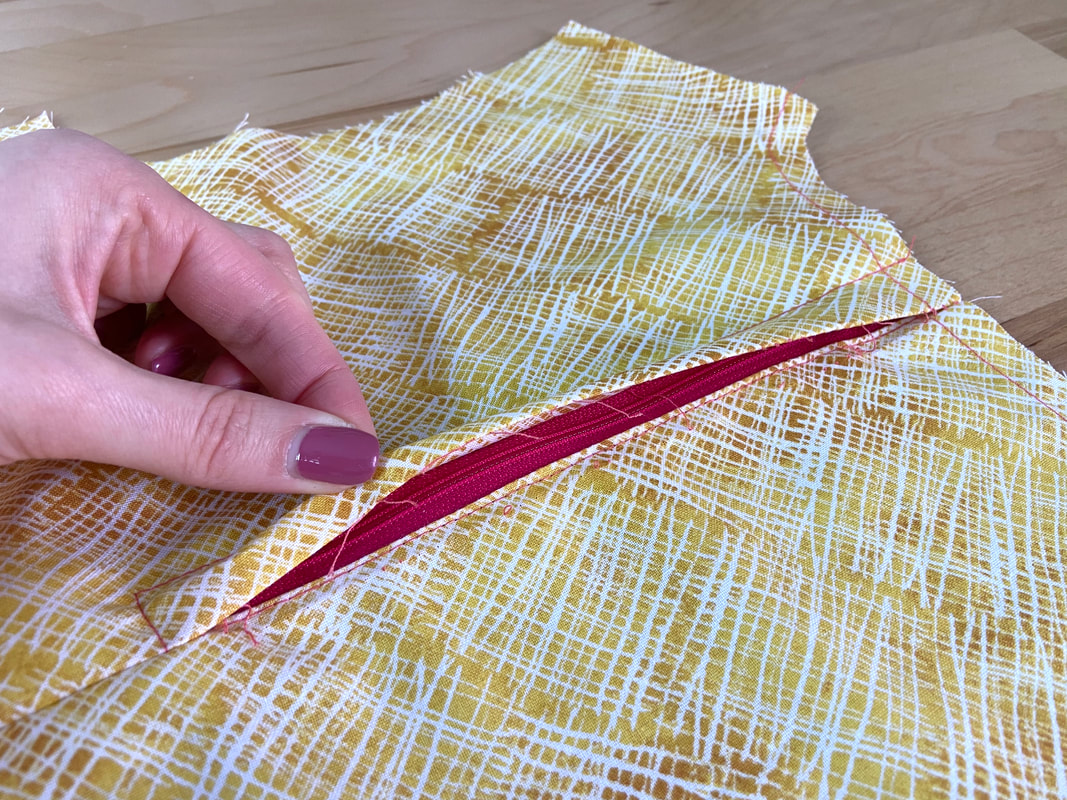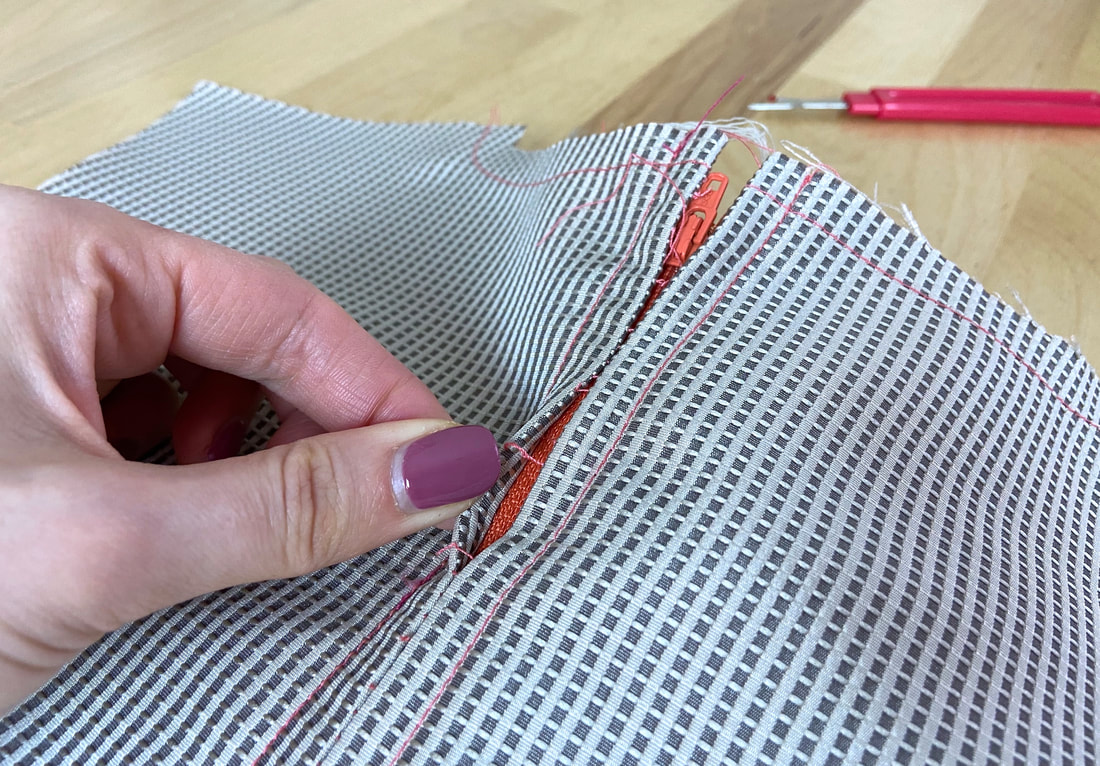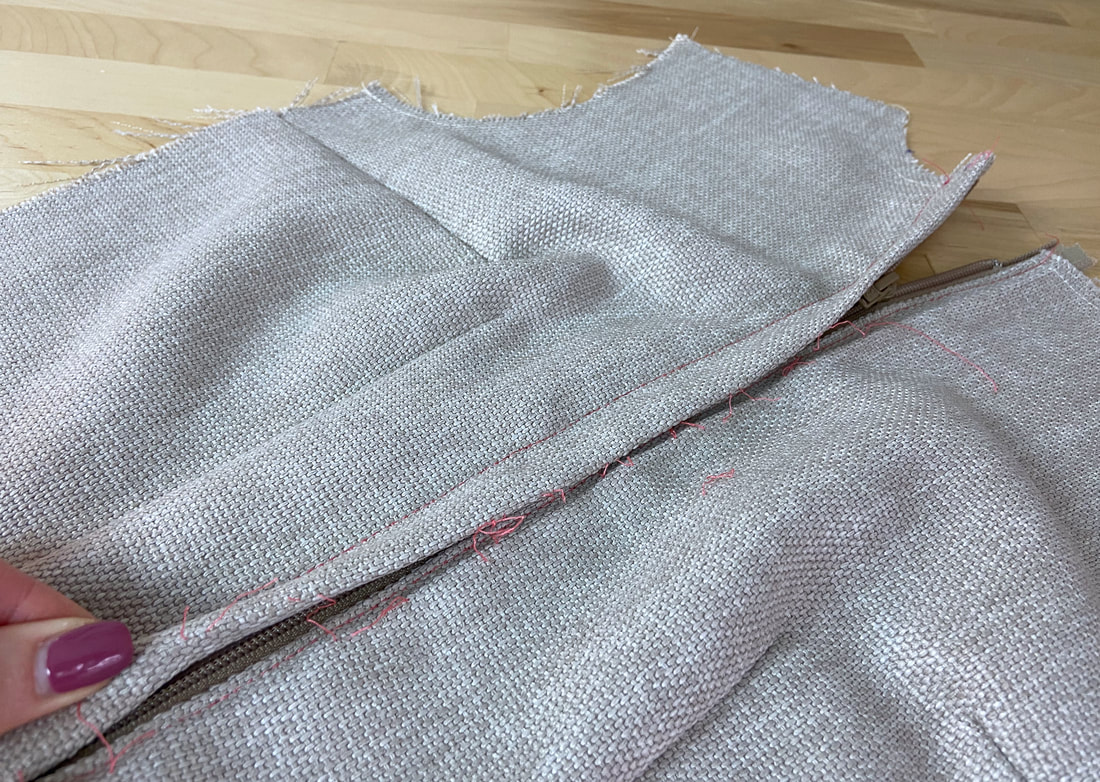How To Sew A Zipper Perfectly Hidden Underneath A Placket
Here is the ultimate trick to keeping zipper teeth accurately aligned and fully hidden underneath the zipper placket: Machine baste the zipper opening portion. Doing so will keep the seam closed during the zipper construction process. Once the zipper is attached, the machine basting can be easily removed by pulling the seam edges apart.
Note: You can use this technique with a multitude of zipper applications, including lapped, centered, separating, and placket-enclosed separating zippers.
Note: You can use this technique with a multitude of zipper applications, including lapped, centered, separating, and placket-enclosed separating zippers.
1. Start by aligning the seam edges housing the zipper as you would any regular seam: face sides touching and seam edges aligning. Insert pins perpendicular to the edges to secure the layers together.
Mark the bottom of the zipper opening with a quilting pencil or tailor's chalk. In the image above, this location is marked with a green dash line.
Mark the bottom of the zipper opening with a quilting pencil or tailor's chalk. In the image above, this location is marked with a green dash line.
2. Starting at the bottom of the seam, stitch the seam regularly following the designated seam allowance (1" in this example). When arriving at the bottom zipper mark (green line in the image above), backstitch over the existing seam stitch to secure the bottom of the zipper opening.
3. Switch you machine's stitch setting to a basting stitch. This is typically the longest stitch length available. Continue stitching on a long stitch setting (machine basting) until you arrive at the top of the seam. The machine basted portion will correspond to the zipper opening.
4. On the basted portion of the seam, use a seam ripper to clip every 5-6 stitches as shown above.
5. Leave the clipped stitches as is being careful not to accidentally pull the seam edges apart. These clips allow the basting to be easily removed once the zipper application is completed.
6. Proceed to aligning and stitching the zipper application as needed. The beauty of keeping the seam closed with machine basting is that you can align the seamline more accurately in relation to the zipper opening.
7. Once the zipper application is complete, remove the machine basting by pulling the seam edges apart. As you pull, remove any loose threads left behind.
You can use this technique with a variety of conventional zipper applications. In the example pictured above, the machine basting technique is used with a centered zipper. In this case, the zipper teeth have to be aligned perfectly with the abutting seam edges while also remaining fully hidden underneath- machine basting provides an invaluable tool during the zipper alignment process.
This machine basting technique can also be used when sewing enclosed separating zippers at the garment opening. The opening edges are entirely machine basted shut following the same process. Once complete, the zipper teeth remain fully hidden along the garment opening and the basting once again, can be easily removed by pulling the edges apart.

